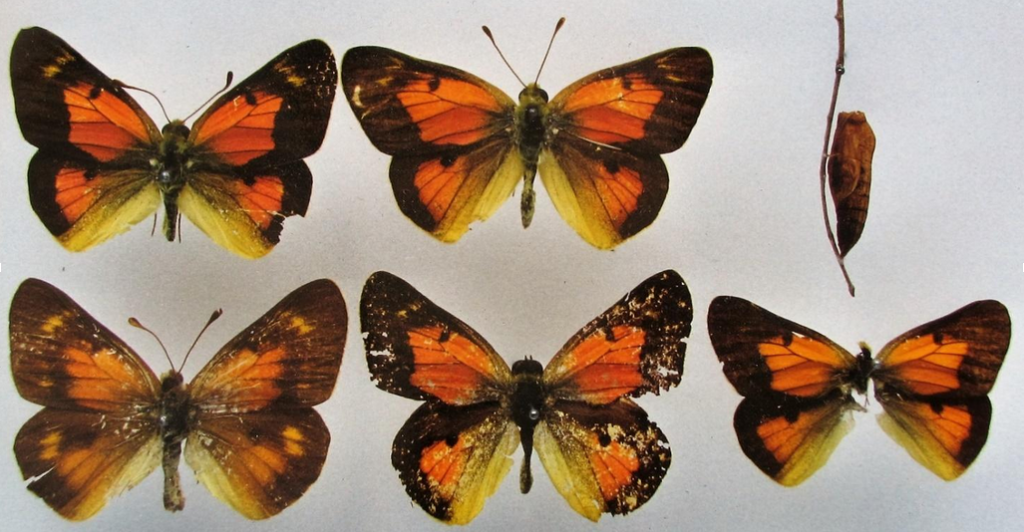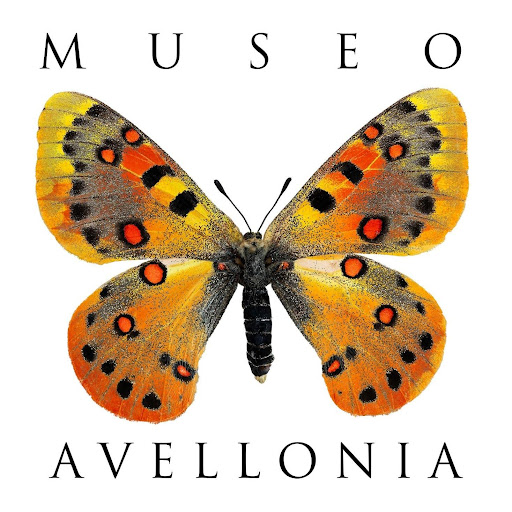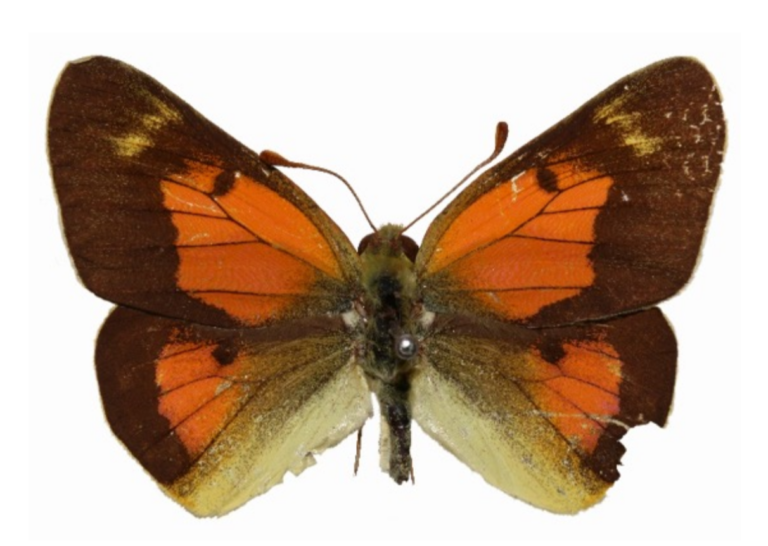Colias ponteni
The world’s most mysterious butterfly — discovered on Hawaii in 1852, never seen again, and now declared extinct.
For over 150 years, Colias ponteni has fascinated scientists and collectors. It is often called the “world’s most wanted butterfly” because of the extraordinary mystery surrounding its origin and its sudden disappearance. Only a handful of specimens exist in museums, and their story has led to decades of debate, detective work, and scientific investigation.

Why is Colias ponteni so special?
Colias ponteni is not just another lost butterfly. It is known from only eleven preserved specimens worldwide, making it one of the rarest butterflies in existence. Its brilliant orange-yellow wings with dark bands set it apart from other species, while its unusually large antennae and primitive wing structures suggest it represented an isolated evolutionary line. The fact that it was collected once and then never seen alive again has made it an object of obsession for naturalists across generations.
First discovery
The butterfly was first collected during Sweden’s first scientific circumnavigation of the globe, carried out by the frigate Eugenie in 1851–1853. In the summer of 1852, the ship anchored at Honolulu on the island of Oahu, Hawaii. Samuel Pontén, the ship’s priest, together with Johan Kinberg, the ship’s doctor, caught several specimens of the striking new butterfly. Eight years later, in 1860, Swedish entomologist Hans Daniel Johan Wallengren formally described the species, naming it after Pontén.
Theories and debates
Soon after its discovery, doubts were raised about the butterfly’s true origin. In 1871, the British entomologist Arthur G. Butler described what appeared to be the same butterfly under a new name, Colias imperialis, and claimed it came from Port Famine in the Strait of Magellan, southern Chile. This assumption was based on mislabeled specimens in the British Museum and created more than a century of uncertainty. For decades, experts debated whether Colias ponteni belonged to the butterfly fauna of Hawaii or South America.
Modern evidence
Recent research has helped resolve the mystery. Studies of museum specimens, including analysis of the original labels written in Wallengren’s own hand, point clearly to Hawaii as the source. Stable isotope analysis (IRMS) has provided strong scientific evidence: the chemical signatures of the original butterflies match the tropical climate of Oahu, not the cold environment of Patagonia. In addition, the butterfly’s likely host plant, the native pea-bush Sesbania tomentosa (ʻōhai), grew in abundance around Honolulu at the time of collection, providing a plausible ecological home.
Extinction
The fate of Colias ponteni is closely tied to the history of Hawaii in the mid-1800s. After the 1850s, extensive sugarcane cultivation, grazing animals, and other agricultural practices transformed the coastal plains of Oahu. These changes destroyed much of the butterfly’s habitat and severely reduced its host plant. Within just a few years of its discovery, Colias ponteni likely lost both its home and its food source. No later expeditions, including the major insect surveys of the 1890s, ever found it again. Today it is regarded as extinct.
Legacy
The story of Colias ponteni is one of natural history’s greatest mysteries — a butterfly discovered at the height of global exploration, debated for more than a century, and finally revealed by modern science to have been a unique Hawaiian species. Its sudden disappearance serves as a striking reminder of how quickly human activity can wipe out even the most spectacular forms of life.
Get deeper about colias ponteni in the links bellow!

